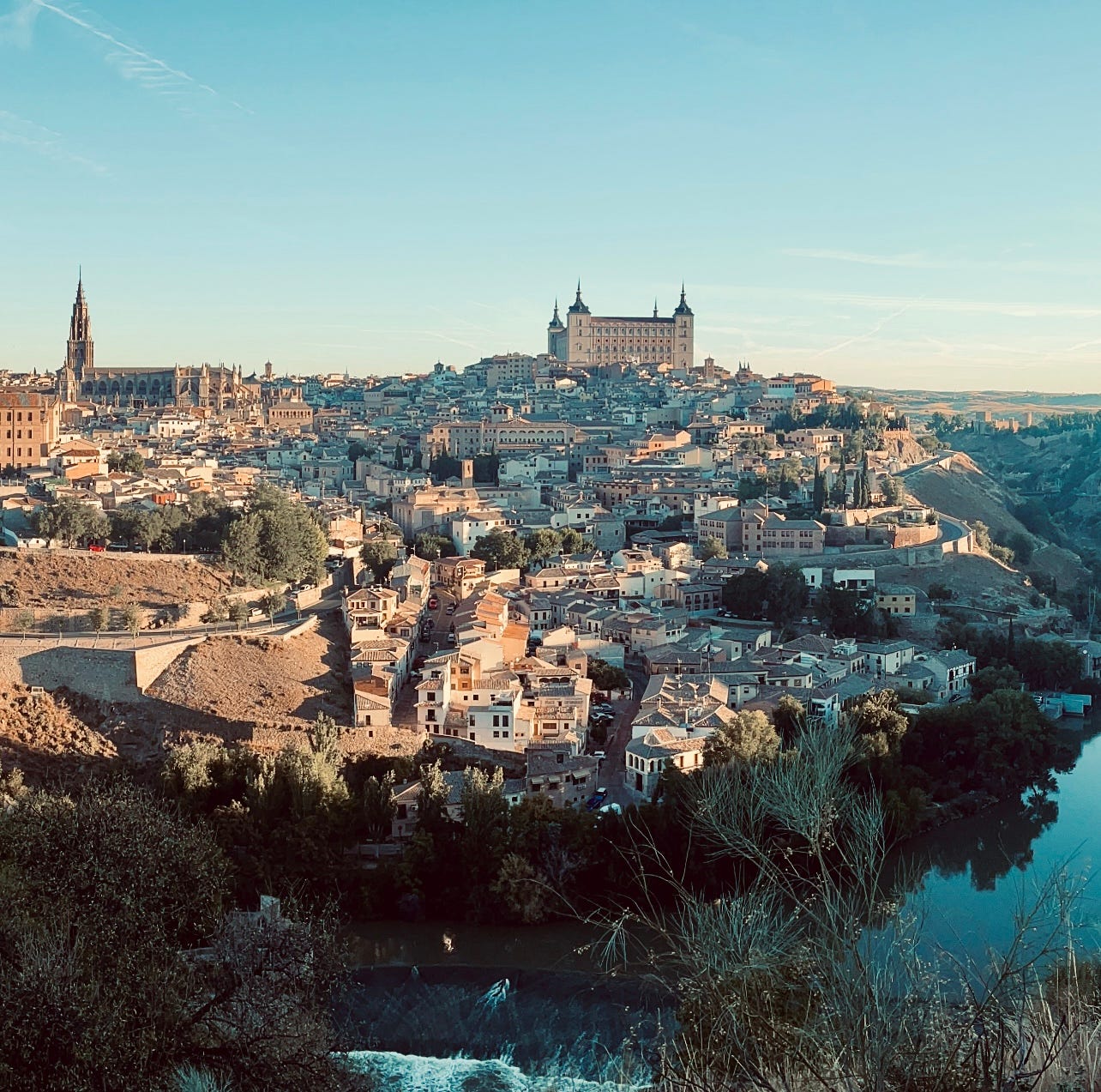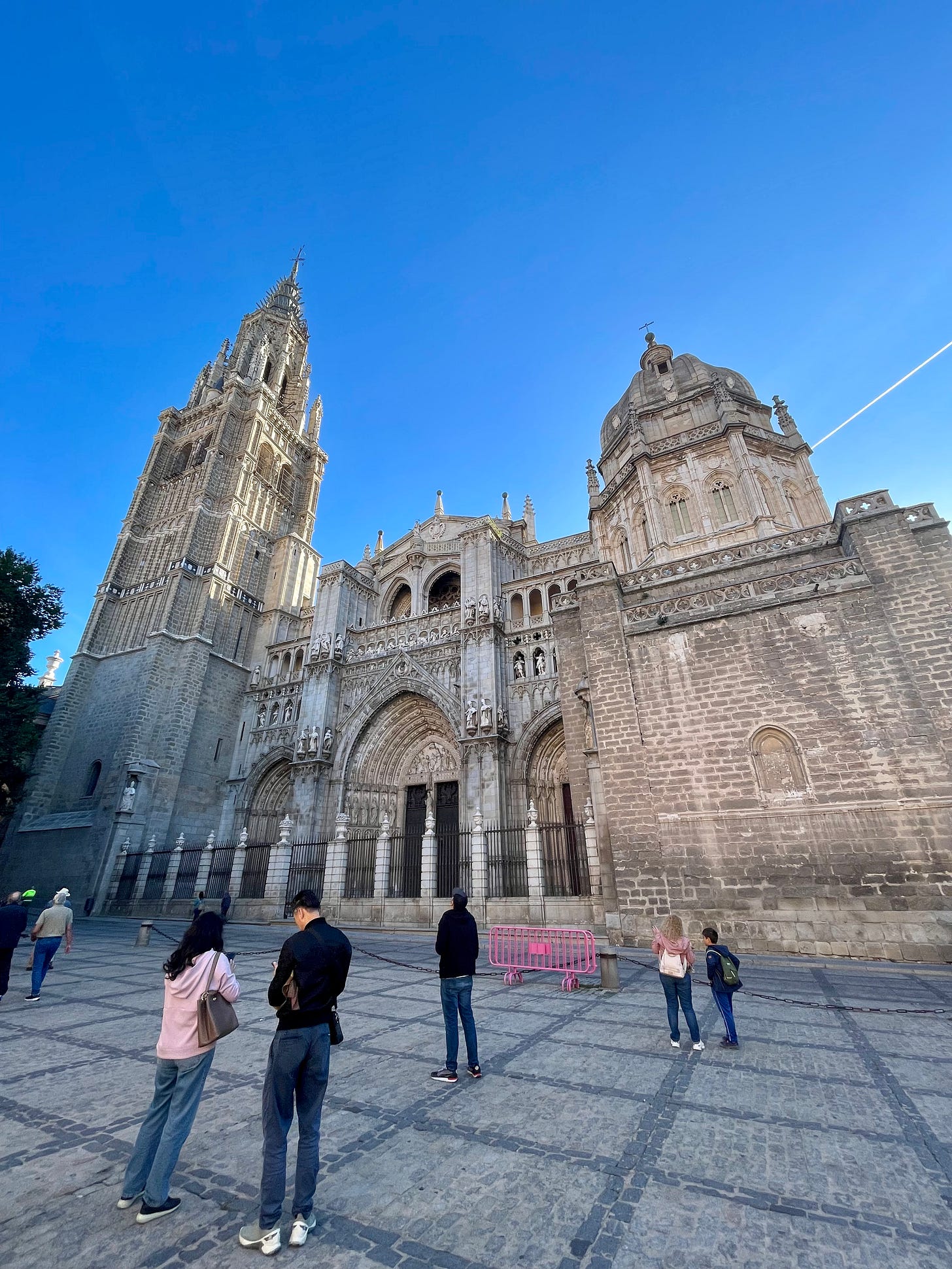Castile–La Mancha casts its storied spell
TOLEDO, SPAIN: Just sixty kilometres from Madrid, there sits a medieval capital shaped by centuries of myth, monarchy and multiple faiths.
The bus south-west from Madrid can be a dreary trip. Satellite suburbs and industrial conglomerations soon give way to a wispy, wind-blown landscape, the colour of hay. It’s hard to imagine much rain comes this way. Terrain flat. Then a rocky outcrop appears, pierced by towers and spires, hinting at a hilltop jewel. The approaching road traces the same path that Romans, Visigoths and Moors once marched along before medieval Catholics took the reigns.
We all however, are forced to circle the town along the ridge of a steep gorge that tumbles down to the fast-flowing Tagus River. This naturally occurring moat surrounds and protects a town on three sides. No wonder it was such an impregnable fortress. El Greco* captured it perfectly in the late 16th century.

Ah, Toledo, Spain’s ancient capital. Its Alcázar commands the horizon like a sentinel from an older world. So too the Catedral de Toledo. And the sinagogas. And the mezquita (mosque). All three houses of worship hinting at a once harmonious past where multiple faiths existed simultaneously.
Harsh, desolate hills are all about, as Jan Morris recounted. The setting of Toledo is all abrasion, she writes:
If a city can be said to look like a person, then Toledo looks like one of those El Greco characters, who were in fact conceived here—towering, handsome, humourless, sad, a little bloodless.
These days, a series of connecting escalators ferry 21st century marauders of a different kind from the estación de autobuses. Yet the town has not let this tourist influx detract from or dilute the weight of its storied past. Toledo’s steep, cobbled, unforgiving streets feel lived in, not like Venice, which feels more like a theme park.
The Alcázar is impossible to ignore. Why would you want to? Its rectangular mass towers over the town; once a royal palace, then a military academy, and now a museum. It subterranean stables housed 2,000 horses in its heyday.
Competing for architectural supremacy is Toledo’s imposing cathedral. Once through the cloister gate you stand gob-smacked at the immense expanse of the interior, with its nave of 7 bays and 28 chapels.
Spend enough time in Europe and you can become blasé about “oh, look here, another cathedral”. But not this one. Artwork by Rubens, Veláquez, Van Dyck, Goya and El Greco grace its walls. Stone angels stare down following shifting shafts of sunlight through stained glass. Nothing in Christendom, notes Jan Morris:
Better expresses the militancy of the Church than the retablo [altarpiece] or reredos of Toledo, which rises in serried magnificence from the high altar to the roof. It is fretted everywhere with stone canopies and niches … like the set of an experimental theatre, it tells the story of the New Testament.
A visit warrants much more than the few hours allotted on most day trips from Madrid. You need a full day at least to absorb the history, appreciate the marriage of multiple faiths, and breathe in the celebrated landscape that shaped a nation. Plus, some of the best game is to be had over a long lunch; take your pick from partridge, pheasant or venison. But make sure to leave room for queso manchego, a local sheep’s milk cheese.





